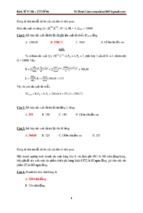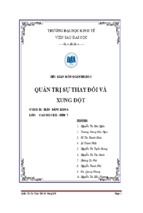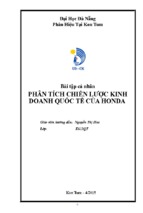Chapter 23: Summary, Recommendations, and Conclusions
509
demonstrated to provide reliable wireless data rates exceeding 100 Mbps
within buildings, with extremely low power spectral densities.
Another exciting development, particularly applicable to home or campus wireless data distribution, is the commercialization of orthogonal
frequency-division multiplexing (OFDM). OFDM offers multiple access
and signal processing benefits that have not been available in previous
modulation methods. It allows wireless data networks to pack high spectral efficiency into relatively small spectrum bandwidths. This is similar
to how digital subscriber line (DSL) technology allows high wireless data
rates to be passed through low-bandwidth copper cables. IEEE 802.16
point-to-multipoint MAN wireless data networks certainly could provide
tetherless broadband access in the local loop, and are already doing so in
developing nations.
New discoveries in the 1990s have shown us how to exploit the spatial dimension of wireless data channels through the use of multiple
antennas at the transmitter and receiver, where significant gains in
either energy efficiency or (more important, perhaps) spectral efficiency
can be obtained. Pioneering work showed that the theoretical wireless
data rates obtained with such systems in an independent Rayleigh scattering environment increase linearly with the number of antennas, and
these rates approach 90 percent of the theoretical maximum Shannon
capacity. New space-time methods have been shown to offer more than
an order of magnitude of increase in spectral efficiency over today’s modulation and coding techniques used in current WLANs and cell phone
systems, and these methods hold promise for wireless data networks of
the future. As an example, Lucent’s V-BLAST laboratory prototype system was demonstrated to provide spectral efficiencies of 20 to 40 bps/Hz
at average signal-to-noise ratio ranging from 24 to 34 dB in an indoor
environment, and potential capacities on the order of 60 to 70 bps/Hz
were demonstrated at 30-dB S/N using 16 antennas at both the transmitter and receiver.
Now, let’s explore in more detail some of the exciting technologies previously listed, and postulate how they may be deployed in networks of
the future. Some of these new technologies will require new spectrum
allocations in order to succeed, and some may exploit already congested
spectrum through the promise of greater capacity. Yet, some of these
ideas may still be ahead of their time, and may need to wait another
decade or so to gain widespread acceptance.
Indoor Access: The Wireless Data Frontier
It is only when sitting, studying, or concentrating that human beings are
most able to use large bandwidths, and this activity happens primarily
510
Part 5:
Advanced Data Network Solutions and Future Directions
inside buildings. Just like watching a movie or television, the absorption
of wireless data is primarily a passive activity, occurring at home or at
work while you sit or stand in a pseudostationary position. Yet, the
entire wireless data industry, as you know it today, was originally developed for mobile voice users, for people traveling in cars between home
and work, before the Internet was even available to the public.
Internet usage has exploded because of consumer and business adoptions inside buildings using fixed connectivity provided by Internet
service providers (ISPs) that team with a local exchange carrier, a longdistance company, or a cable company to gain access to each home. By
stark contrast, wireless data carriers have spent huge amounts of capital
to purchase spectrum licenses and to deploy infrastructure for outdoor
mobile coverage, and have historically had difficulty penetrating their signal into buildings or homes. Furthermore, all current second-generation
digital wireless data technologies were developed with a voice-centric
architecture, before the widespread acceptance of the Internet, leaving
all wireless data carriers vulnerable to each other and to alternative
providers who can provide reliable voice and wireless data service into
buildings. The battle for indoor wireless data access, where broadband
data will be most needed and wanted, is shaping up to be one of the
most important industry issues in the coming decade. Cellular and PCS
operators desperately need third-generation Web-centric wireless data
equipment that can provide Internet-like capabilities in the hands of its
consumers inside buildings, as much to reduce subscriber churn as to
offer new services, yet most carriers do not have existing infrastructure
to provide indoor coverage or capacity reliably for today’s more primitive
cellular technology. This offers an opening for a new type of competitor
that can exploit the availability of low-cost, license-free wireless LAN
(WLAN) equipment.
By using the existing wired Ethernet infrastructure within a building
or campus, WLANs are being deployed rapidly and inexpensively today,
providing tetherless computer access with wireless data rates over an
order of magnitude greater than those promised by much more expensive 3G cellular equipment. As voice over IP technology is improved, it is
conceivable that WLANs could offer mobile/portable wireless data service that integrates phone-like features with Internet access throughout
a campus without any reliance upon the cellular infrastructure.
Today, many early stage companies are looking at ways to integrate
2.5G and 3G cellular technology with WLAN technology, in order to provide coverage and capacity distribution systems for any carrier that
wishes to penetrate campuses or buildings. Phones are now being built
that combine WLAN and cellular capabilities within them, as a way to
ensure connectivity for either type of indoor service.
Chapter 23: Summary, Recommendations, and Conclusions
511
Dual-mode chip sets for cellular mobile and WLAN are already becoming available from Nokia and other sources, and Intel and Microsoft (two
titans steeped in software and semiconductors) recently announced a joint
venture to make a new generation of cell phone. Where in-building wireless data connectivity is concerned, WLANs and their existing, widely
installed IP-based wired network infrastructure may soon become a serious contender to the radio-centric cellular/PCS carriers of today who are
just now seriously addressing the need for connectivity and capacity
inside buildings. Moreover, WLANs are extending to campus-size areas
and in outdoor venues such as tourist attractions and airports.
Multiple Access: The Universal Acceptance
of CDMA
Code-division multiple access (CDMA) allows multiple users to share the
same spectrum through the use of distinct codes that appear as noise to
unintended receivers, and which are easily processed at baseband for
the intended receiver. The introduction of CDMA seemed to polarize service providers and network system designers. On the one side, there
were those who saw CDMA as a revolutionary technology that would
increase cellular capacity by an order of magnitude. On the other side,
there were the skeptics who saw CDMA as being incredibly complex,
and not even viable. While CDMA did not immediately realize a tenfold
capacity increase over first-generation analog cellular, it has slowly won
over skeptics and is the clear winner in the battle of technologies, having emerged as the dominant technology in third-generation cellular
standardization (see Fig. 23-1).1 Furthermore, CDMA techniques have
also been adopted for many consumer appliances that operate in unlicensed bands, such as WLANs and cordless phone systems. Early indications are that ultra-wideband technology may also rely on CDMA for
multiple access, thereby completing the domination of CDMA as a wireless data technology.
Wireless Data Rates: Up, Up, and Away!
The next decade (starting in 2010) will finally see high-speed wireless
data come to maturity. A key to making this a reality will be spectral
efficiencies that are an order of magnitude greater than what is seen
today. At the Physical layer, three technologies will play a role in achieving these efficiencies: orthogonal frequency-division multiplexing, spacetime architectures, and ultra-wideband communications.
512
Part 5:
Advanced Data Network Solutions and Future Directions
Orthogonal Frequency-Division Multiplexing
and Multicarrier Communications
Orthogonal frequency-division multiplexing (OFDM) is a special form of
multicarrier transmission in which a single high-speed wireless data
stream is transmitted over a number of lower-rate subcarriers. While
the concept of parallel wireless data transmission and OFDM can be
traced back to the late 1950s, its initial use was in several high-frequency
military systems in the 1960s such as KINEPLEX and KATHRYN. The
discrete Fourier transform implementation of OFDM and early patents
on the subject were pioneers in the early 1970s. Today, OFDM is a
strong candidate for commercial high-speed broadband wireless data
communications, as a result of recent advances in very large scale integration (VLSI) technology that make high-speed, large-size fast Fourier
transform (FFT) chips commercially viable. In addition, OFDM technology
possesses a number of unique features that make it an attractive choice
for high-speed broadband wireless data communications:
OFDM is robust against multipath fading and intersymbol
interference because the symbol duration increases for the lowerrate parallel subcarriers. For a given delay spread, the
implementation complexity of an OFDM receiver is considerably
less than that of a single carrier with an equalizer.
OFDM allows for an efficient use of the available radio-frequency
(RF) spectrum through the use of adaptive modulation and power
allocation across the subcarriers that are matched to slowly
varying channel conditions using programmable digital signal
processors, thereby enabling bandwidth-on-demand technology and
higher spectral efficiency.
OFDM is robust against narrowband interference, since
narrowband interference only affects a small fraction of the
subcarriers.
Unlike other competing broadband access technologies, OFDM
does not require contiguous bandwidth for operation.
OFDM makes single-frequency networks possible, which is
particularly attractive for broadcasting applications.1
In fact, over the past decade, OFDM has been exploited for wideband
data communications over mobile radio FM channels, high-bit-rate digital subscriber lines (HDSL) up to 1.6 Mbps, asymmetric digital subscriber lines (ADSL) up to 6 Mbps, very high speed subscriber lines
(VDSL) up to 100 Mbps, digital audio broadcasting, and digital video
broadcasting. More recently, OFDM has been accepted for new wireless
Chapter 23: Summary, Recommendations, and Conclusions
513
local-area network standards, which include IEEE 802.11a and IEEE
802.11g, providing data rates up to 54 Mbps in the 5-GHz range, as well
as for high-performance local-area networks such as HiperLAN2 and
others in ETSI-BRAN. OFDM has also been proposed for IEEE 802.16
MAN and integrated services digital broadcasting (ISDB-T) equipment.
Coded OFDM (COFDM) technology is also being considered for the
digital television (DTV) terrestrial broadcasting standard by the Federal
Communications Commission (FCC) as an alternative to the already
adopted digital trellis-coded 8-T VSB (8-VSB) modulation for conveying
approximately 19.3 Mbps MPEG transport packets on a 6-MHz channel.
The transition period to DTV in the United States is scheduled to end on
December 31, 2006, and the broadcasters are expected to return to the
government a portion of the spectrum currently used for analog stations.
The proponents of COFDM technology are urging the FCC to allow
broadcasters to use it because of its robustness in urban environments,
compatibility with DTV in other countries, and appeal in the marketplace for development of DTV.
Current trends suggest that OFDM will be the modulation of choice
for fourth-generation broadband multimedia wireless data communication systems. However, there are several hurdles that need to be overcome before OFDM finds widespread use in modern wireless data communication systems. OFDM’s drawbacks with respect to single-carrier
modulation include OFDM and multicarrier systems.
OFDM OFDM inherently has a relatively large peak-to-average power
ratio (PAPR), which tends to reduce the power efficiency of RF amplifiers. Construction of OFDM signals with low crest factors is particularly
critical if the number of subcarriers is large because the peak power of a
sum of N sinusoidal signals can be as large as N times the mean power.
Furthermore, output peak clipping generates out-of-band radiation due
to intermodulation distortion.
Multicarrier Multicarrier systems are inherently more susceptible to
frequency offset and phase noise. Frequency jitter and doppler shift
between the transmitter and receiver cause intercarrier interference
(ICI), which degrades the system performance unless appropriate compensation techniques are implemented.
The preceding problems may limit the usefulness of OFDM for some
applications. For instance, the HiperLAN1 standard completed by the
European Telecommunications Standards Institute (ETSI) in 1996 considered OFDM but rejected it. Since then, much of the research effort on
multicarrier communications at universities and industry laboratories
has concentrated on resolving the preceding two issues. OFDM remains a
preferred modulation scheme for future broadband radio area networks,
514
Part 5:
Advanced Data Network Solutions and Future Directions
because of its inherent flexibility in applying adaptive modulation and
power loading across the subcarriers. Significant performance benefits
are also expected from the synergistic use of software radio technology
and smart antennas with OFDM systems. Several variations of multicarrier communication schemes have been proposed to exploit the benefits of
both OFDM and single-carrier systems such as spread spectrum.
Ultra-Wideband (UWB) Ultra-wideband modulation uses baseband
pulse shapes that have extremely fast rise and fall times in the subnanosecond range. Such pulses produce a true broadband spectrum,
ranging from near dc to several gigahertz, without the need for RF
upconversion typically required of conventional narrowband modulation.
The ideas for UWB are steeped in original nineteenth-century work by
Helmholtz and were viewed as controversial at the time (and are still
viewed as such today).
UWB, also known as impulse radio, allows for extremely low cost,
wideband transmitter devices, since the transmitter pulse shape is
applied directly to the antenna, with no upconversion. Spectral shaping is
carried out by adjusting the particular shape of the ultrashort-duration
pulse (called a monopulse), and by adjusting the loading characteristics of
the antenna element to the pulse. Figure 23-3 illustrates a typical
bimodal gaussian pulse shape for a UWB transmitter.1 The peak-to-peak
time of the monopulse is typically on the order of tens or hundreds of
picoseconds, and is critical to determining the shape of the transmitted
spectrum. When applied to a particular antenna element, the radiated spectrum of the UWB transmitter behaves as shown in Fig. 23-3.
Figure 23-3
Time domain
response and
frequency domain
response of a gaussian UWB monopulse
applied to an antenna.
Pulses have durations
that are fractions of
a nanosecond.
–0.25
0.25
Tp-p
Time (ns)
0
–10
–20
–30
–40
–50
–60
2
4
6
8
Frequency (GHz)
515
Chapter 23: Summary, Recommendations, and Conclusions
The UWB signals, which may be thinly populated over time as shown
in Fig. 23-4, have extremely low power spectral density, allowing them
to be used simultaneously with existing RF devices throughout the spectrum.1 Because of the extremely wide bandwidths, UWB signals have a
myriad of applications besides communications. On February 14, 2002,
the FCC in the United States authorized the introduction of UWB for
radar ranging, metal detection, and communications applications. The
UWB authorization, while not completely final, is likely to limit transmitters according to FCC Part 90 or Part 15 rules. Primary UWB operation is likely to be contained to the 3.1- to 10.6-GHz band, where transmitted power levels will be required to remain below 41 dBm in that
band. To provide better protection for GPS applications, as well as aviation and military frequencies, the spectral density is likely to be limited
to a much lower level in the 960-MHz to 3.1-GHz band.
The ultrashort pulses allow for accurate ranging and radar-type
applications within local areas, but it is the enormous bandwidth of
UWB that allows for extremely high signaling rates that can be used for
next-generation wireless data LANs. UWB can be used like other baseband signaling methods, in an on-off keying (OOK), antipodal pulse shift
keying, pulse amplitude modulation (PAM), or pulse position modulation
(PPM) format (see Fig. 23-4). Furthermore, many monopulses may be
transmitted to make up a single signaling bit, thereby providing coding
gain and code diversity that may be exploited by a UWB receiver.
Space-Time Processing Since the allocation of additional protected
(licensed) frequency bands alone will not suffice to meet the exploding
Figure 23-4
Examples of symbols
sent using: (a) on-off
keying; (b) pulse
amplitude modulation; (c) binary phase
shift keying; and
(d) pulse position
modulation using
UWB technology.
(a)
1
2
3
4
(b)
1
2
3
4
(c)
1
3
4
(d)
1
2
2
3
4
516
Part 5:
Advanced Data Network Solutions and Future Directions
demand for wireless data services, and frequency spectrum represents a
significant capital investment (as seen from the 3G spectrum auctions in
Europe), wireless data service providers must optimize the return on
their investment by increasing the capacity of cellular systems. Cellsplitting can achieve capacity increases at the expense of additional base
stations. However, space-time processing technology and multiple-input,
multiple-output (MIMO) antenna architectures (which simultaneously
exploit small-scale temporal and spatial diversity by using antennas and
error-control codes in very close proximities) hold great promise to vastly
improve spectrum efficiency for PCS service providers by providing
capacity enhancement and range extension at a considerably lower cost
than the cell-splitting approach. Moreover, space-time technology is envisioned to be used in both cellular and ad hoc network architectures. For
instance, the use of smart antennas in rural areas can be effective in
range improvement over a larger geographical area, resulting in lower
equipment costs for a cellular system. The use of smart antennas in an
ad hoc network could increase network throughput, because of suppression of the cochannel and adjacent-channel interference provided by the
directional antenna gain pattern, in addition to supporting LPI/LPD features for military applications. Space-time processing could also enable
3G infrastructure to accommodate location technology in order to meet
the requirements for E911.
Since multipath fading affects the reliability of wireless data links, it
is one of the issues that contributes to the degradation of the overall
quality of service. Diversity (signal replicas obtained through the use of
temporal, frequency, spatial, and polarization spacings) is an effective
technique for mitigating the detrimental effects of deep fades. In the
past, most of the diversity implementations have focused on receiverbased diversity solutions, concentrating on the uplink path from the
mobile terminal to the base station. Recently, however, more attention
has been focused on practical spatial diversity options for both base stations and mobile terminals. One reason for this is the development of
newer systems operating at higher frequency bands. For instance, the
spacing requirements between antenna array elements for wireless
products at 2.4-GHz and 5-GHz carriers do not significantly increase the
size of the mobile terminals. Dual-transmit diversity has been adopted
in 3G partnership projects (3GPP and 3GPP2) to boost the wireless data
rate on downlink channels, because future wireless data multimedia
services are expected to place higher demands on the downlink rather
than the uplink. One particular implementation, known as open-loop
transmit diversity or space-time block coding (STBC), is illustrated in
Fig. 23-5.1
The spreading out of wireless data in time and through proper selection of codes provides temporal diversity, while using multiple antennas
517
Chapter 23: Summary, Recommendations, and Conclusions
Figure 23-5
Functional block
diagram of the
space-time block
code (STBC).
s0
s1
–s*1
s*0
tx antenna 0
h0 = ␣0e j0
h1 = ␣1e j1
tx antenna 1
tx antenna 1
n0
Interference
and noise
n1
h0
Channel
estimator
h0
h1
h1
Combiner
s0
s1
Maximum likelihood detector
at both the transmitter and receiver provides spatial diversity. This
implementation increases spectrum efficiency and affords diversity gain
and coding gain with minimal complexity (all the transmit coding and
receiver processing may be implemented with linear processing). Furthermore, it is shown in Fig. 23-5 that the resultant signals sent to the
maximum likelihood detector are identical to those produced by a single
transmit antenna with a two-antenna maximum ratio receiver combiner
(MRRC) architecture. Thus, without any performance sacrifice, the burden of diversity has been shifted to the transmitter, resulting in a system and individual receiver that are more cost-effective (see Fig. 23-6).1
It is possible to further increase the wireless data rate on the downlink
by adding one or more antennas at the mobile terminal such as in Qualcomm’s high-data-rate (HDR) system specification.
In a closed-loop transmit diversity implementation scheme, the
receiver will provide the transmitter information on the current channel
characteristics via a feedback message. It can then select the best signal
or predistort the signal to compensate for current channel characteristics. Obviously, the performance of a closed-loop transmit diversity
scheme will be superior to that of the simple “blind transmit” STBC
518
Part 5:
Advanced Data Network Solutions and Future Directions
100
Figure 23-6
Performance
comparison between
STBC and MRRC for
various antenna
configurations.
No diversity (1 Tx, 1 Rx)
MRRC (1 Tx, 2 Rx)
MRRC (1 Tx, 4 Rx)
New scheme (2 Tx, 1 Rx)
New scheme (2 Tx, 2 Rx)
10–1
Pb (BER)
10–2
10–3
10–4
10–5
10–6
5
10
15
20
25
30
35
40
45
50
Average S/N (dB)
scheme shown in Fig. 23-5. The latter approach would be preferred for
small hand-held wireless data devices since the transmit power and battery life are at a premium. Besides STBC, blind transmit diversity may
also be implemented by using a delay diversity architecture, where the
symbols are equally distributed, but incrementally delayed among different antennas, emulating a frequency-selective channel. An equalizer at
the receiver will utilize training sequences to compensate for the channel
distortion, and diversity gain is realized by combining the multiple
delayed versions of a symbol. A shortcoming of this approach, however, is
that it suffers from intersymbol interference, if channel propagation differences are not integer multiples of the symbol periods. In this case, feedback from the receiver may be used to adjust delays.
MIMO architectures utilizing multiple antennas on both transmitter
and receiver are one of the important enabling techniques for meeting
the expected demand for high-speed wireless data services. Figure 23-7
illustrates the expected capacities for systems exploiting spatial diversity
along with capacities of existing wireless data standards.1 Looking at
these trends, you may conclude that spatial diversity at both transmitter
and receiver will be required for future-generation high-capacity wireless
data communication systems.
The Bell Labs layered space-time (BLAST) approach (also known as
diagonal BLAST or simply D-BLAST) is an interesting implementation
of a MIMO system to facilitate a high-capacity wireless data communication system with greater multipath resistance. The architecture could
increase the capacity of a wireless data system by a factor of m, where m
519
Chapter 23: Summary, Recommendations, and Conclusions
225
1 Tx 1 Rx antennas
1 Tx 2 Rx antennas We can be here
2 Tx 1 Rx antennas
2 Tx 2 Rx antennas
200
Achievable data rate (kbps)
per 3-kHz channel
Figure 23-7
Achievable wireless
data rates for several
MIMO systems.
175
150
125
100
75
50
IS – 136+
25
IS – 136
We are here now
0
0
5
10
15
S/N per Rx antenna (dB)
20
is the minimum number of transmit or receive antennas. Like the delay
diversity architecture, BLAST does not use channel coding. Instead, it
exploits multipath through the use of multiple transmit antennas
and utilizes sophisticated processing at the multielement receiver
to recombine the signals that are spread across both time and space.
Figure 23-8 depicts a functional block diagram of a BLAST transmitter
and receiver.1
Figure 23-8
BLAST functional
block diagram.
Tx
data
Vector
encoder/
demux
Switch matrix
Transmitter
number 1
Transmitter
number 2
Receiver
number 1
Receiver
number 2
Receiver
number 3
Transmitter
number m
m independent
transmitters
(unique training sequences)
Signals periodically cycled
across all antennas
BLAST
Rx
signal
processing: data
estimation
and
decoding
Receiver
number n
n independent
receivers (n ⱖ m)
Nulling and canceling
iterative algorithm
520
Part 5:
Advanced Data Network Solutions and Future Directions
To minimize complexity, the BLAST architecture employs a recursive
“divide and conquer” algorithm for each time instant, which is known as
a nulling and cancellation process. Figure 23-9 illustrates this process
over one complete cycle for one out of m processing channels (four transmit antennas are being received by one of the four receiver channels).1
In this illustration, the receiver will receive packet A as it sequences
through the transmit antennas. At the beginning of a cycle, the signal
from a specific transmit antenna is isolated by canceling other signals
that have already been received from other transmitters. After the first
transmit antenna shift, the known, previously received signals are again
subtracted from the composite signal, but now there is a “new” signal
that has not been identified and must be removed. The nulling process
is performed by exploiting the known channel characteristics (which are
determined by the training sequences received from each transmit
antenna, typically 2m symbols long). By projecting this new received
signal vector against the transpose of the channel characteristics from
the target antenna, it is effectively removed from the processing. At the
same time, the known channel characteristics are used to maximize
the desired signal. At the next shift of transmit antennas, this process
Figure 23-9
Illustration of one
cycle of layered
space-time receiver
processing for a
system with four
transmit and receive
antennas.
Step 1. Estimate “strongest” signal.
Step 2. Cancel known previously received signals.
Step 3. Null weaker signals and signals from previous antennas against
channel estimates.
Step 4. Repeat process m times, for m transmit antennas.
Detect later: NULLED
(from channel estimate)
Antenna 1
A
D
C
B
A
Antenna 2
SPACE
Antenna 3
B
C
A
B
D
A
C
D
B
C
Antenna 4
C
D
0
A
B
2
TIME
3
Already detected:
CANCELED
D
4
Detect now
Detect A at Avoid interference
time interval:
from antenna:
0 to
–
to 2
1
2 to 3
1, 2
3 to 4
1, 2, 3
5
Chapter 23: Summary, Recommendations, and Conclusions
521
continues, with the known signals cancelled and the new signals nulled
on the basis of channel characteristics.
With the promise of considerable capacity increase, there has been
significant research into BLAST architectures focusing on optimized
training sequences, different detection algorithms, and analysis of the
benefits of combining the BLAST architecture with coding, among other
topics. One of the most prevalent research areas is the development of
vertical BLAST (V-BLAST), a practical BLAST architecture with considerably simpler processing. In V-BLAST, there is no cycling of codes
between antennas, and therefore this simplifies the transmitter. At the
receiver, the nulling and cancellation process is a recursive algorithm
that orders the signals, chooses the optimum S/N at each stage, and linearly weights the received signals. These modifications greatly simplify
the receiver processing, making V-BLAST a leading candidate for nextgeneration indoor and mobile wireless data applications.
Several near-future wireless data systems already plan to use spacetime codes. For instance, the proposed Physical layer of the IEEE
802.16.3 broadband fixed wireless data access standard is considering
using space-time codes as the inner code and a Reed-Solomon outer
code. The European WIND-FLEX project is studying the “optimum”
number of transmitter and receiver antennas and algorithm complexity
for the design of 64- to 100-Mbps adaptive wireless data modems for
indoor applications. Also, the fourth-generation (4G) cellular standards
are expected to support data rates up to 20 Mbps with bandwidth efficiencies of up to 20 per cell. Space-time coding has been identified as one
of the technologies needed to meet this performance requirement.
Ad Hoc Networking
Clearly, achieving higher wireless data rates at lower cost is a key for
wireless data ubiquity. As previously stated, there are several Physical
layer technologies that hold promise for achieving higher wireless data
rates. However, another key to the future of wireless data networks is
the ability to adapt and exist without substantial infrastructure. Thus,
ad hoc networks are a key technology for future systems. An ad hoc network (also known as a packet radio network) is the cooperative engagement of a collection of mobile nodes that allows the devices to establish
ubiquitous communications without the aid of a central infrastructure.
The links of the network are dynamic in the sense that they are likely to
break and change as the nodes move about the network. The roots of ad
hoc networking can be traced back as far as 1968, when the work on the
ALOHA network was initiated. The ALOHA protocol supports distributed
522
Part 5:
Advanced Data Network Solutions and Future Directions
channel access in a single-hop network (every node must be within reach
of all other participating nodes), although it was originally employed for
fixed nodes. Later in 1973, DARPA began the development of a multihop
packet radio network protocol. The multihopping technique increases the
network capacity by spatial domain reuse of concurrent, but physically
separated, multihop sessions in a large-scale network (reduces interference); conserves transmit energy resources; and increases the overall network throughput at the expense of a more complex routing-protocol
design.
In the past, ad hoc networking has been primarily considered for communications on battlefields and at the site of a disaster area, where a
decentralized network architecture is an operative advantage or even a
necessity. For instance, when major catastrophes happen, such as the
September 11, 2001, attack, the need for a rapidly deployable, seamless
communications infrastructure between public service agencies, military
entities, and commercial communication systems becomes essential.
Now, as novel radio technologies such as Bluetooth 1 materialize, the
role of ad hoc networking in the commercial sector is expected to grow
through interaction between the applications of various portable devices
such as notebooks, cellular phones, PDAs, and MP3 players.
While present-day cellular systems still rely heavily on centralized
control and management, next-generation mobile wireless data system
standardization efforts are moving toward ad hoc operation. For instance,
in the direct-mode operation of HiperLAN2, adjacent terminals may communicate directly with one another. Fully decentralized radio, access, and
routing technologies are enabled by Bluetooth, IEEE 802.11 ad hoc mode,
IEEE 802.16 mobile ad hoc networks (MANET), and IEEE 802.15 personal area networks (PAN). Someone on a trip who has access to a Bluetooth
PAN could use a GPRS/UMTS mobile phone as a gateway to the Internet
or to the corporate IP network. Also, sensor networks enabled by ad hoc
multihop networking may be used for environmental monitoring (to
monitor and forecast water pollution, or to provide early warning of an
approaching tsunami) and for homeland defense (to perform remote security surveillance). Therefore, it is not surprising that the trends of future
wireless data systems, characterized by the convergence of fixed and mobile
networks, and the realization of seamless and ubiquitous communications,
are both attributed to ad hoc networking.
The lack of a predetermined infrastructure for an ad hoc network and
the temporal nature of the network links, however, pose several fundamental technical challenges in the design and implementation of packet
radio architectures. Some of them include:
Security and routing functions must be designed and optimized so
that they can operate efficiently under distributed scenarios.
Chapter 23: Summary, Recommendations, and Conclusions
523
Overhead must be minimized, while ensuring connectivity in the
dynamic network topology is maintained (approaches are needed to
reduce the frequency of routing table information updates).
Fluctuating link capacity and latency in a multihop network must
be kept minimal with appropriate routing protocol design.
Acceptable tradeoffs are needed between network connectivity
(coverage), delay requirements, network capacity, and the power
budget.
Interference from competing technology must be minimized
through the use of an appropriate power management scheme and
optimized medium access control (MAC) design.1
Network Optimization: Removing
Boundaries
While the layered OSI design methodology (see Fig. 23-10) has served
communications systems well in the past, evolving wireless data networks
are seriously challenging this design philosophy.1 Emerging networks
must support various and changing traffic types with their associated
quality of service (QoS) requirements as well as networks that may have
changing topologies. The problem of various traffic types is typified in
newly defined 3G networks. These networks must support multimedia
traffic with manifold delay, error rate, and bandwidth needs. Networks
Figure 23-10
Traditional OSI communication network
layers.
Application
Presentation
Network: routing; QoS;
congestion control;
packet size; ad hoc routing
Session
Transport
Data link: frame size; FEC; ARQ;
power control;
radio resource control;
handoff; multiple access
Network
Data link
Physical
Physical: modulation; power
control; data rate; spreading;
channel model
524
Part 5:
Advanced Data Network Solutions and Future Directions
that experience changing topologies include ad hoc networks that lack network infrastructure and have nodes that are continuously entering and
leaving the network.
In order to meet the challenges of ubiquitous wireless data access,
network functions (the various OSI layers) must be considered together
in designing a network. QoS requirements, which can and will vary
according to application, will force the Network layer to account for the
Physical layer design when the network throughput is optimized. Furthermore, different applications are better served by different optimizations. This leads to a design methodology that blurs the lines between
layers and attempts to optimize across layer functionality.
As a primitive example, consider two techniques that have been proposed to improve system performance at different layers: 41 space-time
block codes (STBC) at the Physical layer and a “greedy” scheduling algorithm at the MAC layer. Greedy scheduling means a simplified version of
the scheduling algorithm employed in cdma2000 3G1X-EVDO, also called
HDR. This scheduler is based on feedback from the mobile units, and
schedules packet transmissions to the mobile that is currently experiencing the best channel conditions (highest SINR). STBC is capable of providing significant diversity advantage at the Physical layer. An even larger
advantage can be provided by greedy scheduling provided that the scheduler has 20 users from which to choose. This multiuser diversity can provide great advantages (albeit at the sacrifice of delay, which is beyond the
scope of this book). However, if you add 41 STBC on top of greedy scheduling, you obtain virtually no further advantage at a cost of quadrupling the
RF cost. It can also be shown that as the number of users increases, STBC
can actually degrade the SINR performance. However, in round-robin
scheduling or in the case of a small number of data users, STBC helps significantly. Thus, ideally, the scheduler and the Physical layer should be
optimized together to maximize performance. This simple example also
shows the importance of the QoS requirements. If an application has very
strict delay requirements (voice), greedy scheduling is not desirable since
users experiencing bad channels must wait for service, but STBC would be
an acceptable way to achieve diversity advantage. On the other hand,
wireless data applications that are delay-insensitive (Web traffic) would
lend themselves well to greedy scheduling rather than STBC, which
requires four transmitters and RF chains.
While cross-layer network design is an important step in optimizing
new multimedia networks, it is still a step below what will be necessary
to truly maximize the performance of future networks. True optimization will not only require cross-layer design, but also cross-layer adaptability. Traditionally, networks have contained some ability to adapt. For
example, many communications systems can adjust to changing channel
conditions by using signal processing methods, or to changing traffic
Chapter 23: Summary, Recommendations, and Conclusions
525
loads by adjusting routing tables. However, these adjustments have
been isolated to a specific layer. Cross-layer adaptability will allow all
network functions to pass information between functions and adapt
simultaneously. Such adaptability will be required to meet the demand
of changing QoS requirements, along with changing network loads and
channel conditions. While the cross-layer network design requires static
optimization across network layers, adaptability requires dynamic optimization across layers.
Challenges to Cross-Layer Optimization
There are several challenges and research issues associated with the vision
of cross-layer optimization. First and most obviously, full network design
and optimization are extremely complicated (and nearly intractable). This
is particularly true when attempting real-time dynamic optimization.
Some attempt must be made to determine design methodologies that
encompass the incredible freedom offered to the designer when cross-layer
optimization is possible.
A second serious problem involves the metrics to be used in the optimization. Network layers (and, consequently, functionalities) have traditionally had their own isolated optimization criteria. For example, Physical
layer design is primarily focused on minimizing the bit error rate, while
the MAC layer design is concerned with node throughput or channel availability. The network design, on the other hand, typically uses delay or
routing efficiency. Thus, you should ask: What metrics represent all of
these concerns? How do you optimize all concerns together or prioritize
them intelligently?
A related issue arises in the context of dynamic optimization. In dynamic
optimization, information is passed between the Network layers. The system designer must judiciously choose the information to be passed. It must
not be overly complicated for risk of creating large delays or computationally expensive optimization routines. However, it cannot be overly simplistic and risk communicating too little information.
The design of such systems clearly requires sophisticated modeling
(simulation) procedures. Traditional network simulators do not have
sufficient granularity at the Physical layer to allow Physical layer
design. On the other hand, adding network functionality to traditional
Physical layer simulators would result in prohibitively long run times.
Furthermore, network simulators embrace an event-driven methodology
while Physical layer simulators use a time-driven methodology. The typical solution to this problem may be a two-tier simulation approach that
uses the output of a Physical layer simulation to stimulate network simulations. However, this does not allow for interaction between the layers
526
Part 5:
Advanced Data Network Solutions and Future Directions
and precludes cross-layer optimization. Thus, hybrid approaches are necessary. Some possible options include:
Combined simulation and semianalytic approaches that simulate
high-level functionality and use semianalytic simulation
approaches to approximate lower-level functionality.
Combined simulation and hardware approaches that use hardware
to perform lower-level functionality.
Variable-granularity approaches that use a network simulator with
coarse granularity (abstracting lower layers) for a majority of
Physical layer links and fine granularity (possibly down to the
sample level) for links of specific interest.
Emulation and real-time processing involving all facets, from
Physical layer to application, simultaneously.1
These hybrid approaches have yet to be firmly established and represent
significant research areas.
A final research issue in the area of dynamic network optimization concerns network control. When functionality across layers is allowed to
adapt, it is important that something has control of the process. Otherwise, the various adaptations can work at cross purposes. Thus, the question becomes, “Who has control?” Arguments can be made for each layer
concerning the best place to locate the control, but the fact remains that
this is a serious research issue that may indeed have different solutions
depending on the end-user application or particular physical environment
of operation.
Conclusions
This book has described many important new technologies and
approaches to the wireless data communications field that are likely to
evolve rapidly in the early part of the twenty-first century. In the 1990s,
cellular telephone service and the Internet grew from the incubator
stage to global acceptance. In the next 10 years, the Internet and wireless data communications will become intertwined in ways only imagined today.
NOTE The great new frontier for the wireless data communications
industry is inside buildings, and a battle for access is emerging between
cellular/PCS license holders and ad hoc networks installed by the building
owners using license-free WLAN technology.
Chapter 23: Summary, Recommendations, and Conclusions
527
The book overwhelmingly illustrated the worldwide acceptance of
CDMA as the multiple access system of choice, and presented the many
challenges CDMA faces as the whole communications industry evolves to
fourth-generation wireless data networks. Clearly, the need for higher data
rates will lead to new modulation and coding techniques that can provide
high spectral efficiencies. This book discussed three candidates for providing improved spectral efficiency at the Physical layer: orthogonal frequencydivision multiplexing, ultra-wideband transmission, and space-time modulation/coding. Each of these technologies has the potential to increase the
spectral efficiency of the Physical layer and will likely find its way into
future systems. OFDM was highlighted as an emerging signaling method
that holds promise for broadband wireless data access. The fundamentals
and challenges for OFDM were given, and new applications that use
OFDM were presented. Ultra-wideband, recently approved for U.S. deployment by the FCC, was highlighted in the book as an important emerging
technology, and some of the fundamentals of this controversial signaling method were given. Space-time coding was also discussed in detail,
with several examples given to highlight the tremendous potential of this
technique.
While Physical layer advances will be a key to the future, an even
more critical area for future networks exists at the higher layers. Ad hoc
networks will clearly play a large role in future systems because of the
flexibility that will be desired by the consumer. The book also discussed
the key aspects of ad hoc networks and the research issues that must be
examined to advance the use of ad hoc networks in future systems. In
addition, the book discussed the idea of cross-layer optimization. The
emergence of wireless data applications with diverse delay and fidelity
requirements along with constantly changing topologies and requirements for future networks will require a new design methodology.
Specifically, future network designs will need to consider the interaction
of network layers. The book also examined a simple example as well as
the key challenges associated with such a design approach.
While predicting the future is a tricky business, it is clear that wireless data will be a key technology in the future of communications.
Finally, the book presented several of the technologies that will advance
wireless data communications, and the challenges that must be met to
make ubiquitous communications a reality.
References
1. Theodore S. Rappaport, A. Annamalai, R. M. Buehrer, and William H.
Tranter, “Wireless Communications: Past Events and a Future
528
Part 5:
Advanced Data Network Solutions and Future Directions
Perspective,” IEEE Communications Magazine, 445 Hoes Lane, Piscataway, NJ 08855, 2002.
2. John R. Vacca, Wireless Broadband Networks Handbook, McGraw-Hill,
2001.
- Xem thêm -




















